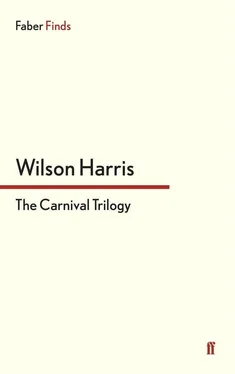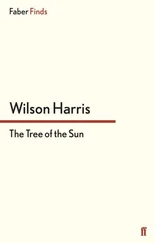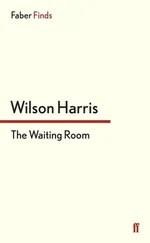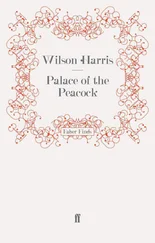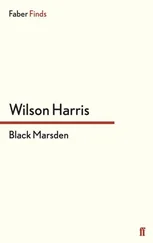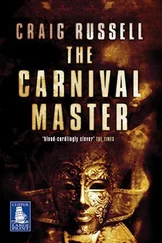‘The homecoming play, political, religious,’ said the airwave voice of Proteus, ‘was Alicia’s dream of unconscious sacrifice lifting and surfacing into shared consciousness within cross-cultural, self-reversible, parallel existences. Within her own family she had experienced many sorrows, slavery, emancipation, grief, poverty, passion, the scaffolding of ruin, the pains of mortal and immortal humanity, every pattern of hunger one could name, the hunger of deprivation, the hunger of the rich, and all of this imbued her with a sense of bleak but real hope, a sense of transfigured bodies and ghosts, that led her to anticipate the need — a great abiding need — for a carnival procession in which all shades, all illuminations, all losses, all gains, deprivations, miseries, glories, may enter into a self-confessional treaty with democracy and sovereignty.
‘What she feared, Anselm, was that the sculpture of black Agamemnon on her doorstep was a premature manifestation of an evolution of creativity and of a reformation of the heart: premature because of a refusal to judge the self, to judge one’s frailty, and to entertain dualities, trinities, quadruple associations through which impossible stature, impossible divinity of character, may still come into the theatre of history when such “impossibility” is shared by many actors, broken into mutual parts , into mutual lives, shared lives, shared difficulties, shared obscurities, shared illuminations, shared compassion.’
I understood. Yes, I knew now clearly why she ran from herself, why she looked into me as an extension of herself, extensive living dreamer and carnival heir retracing his footsteps in hers into a theatre of law, shared trial, the trial of the self. I was on trial, Alicia was on trial, Canaima, Rose, Proteus, Harold were on trial. Nameless others. The judge was on trial. The natures of art and science, man-made order, nature-made furies or daemons, were on trial. If I were not convinced they were all on trial I would have run away from myself into the dust of history and abandoned any hope whatsoever of comprehension of the core of Being, the core of metamorphosis.
I could not leave it there. I felt the necessity to restate Alicia’s misgivings and anxieties, the anguish of women enslaved by the codes of men, the contracts, the bonds, instigated at a psychical level by men. What was Being? What was Presence? Black, white, ancient, modern Agamemnon was but a partial and bleak manifestation of sacrificed Being (to which women were subject) within a civilization disposed to War (whether violent war or non-violent war) and a humanity disposed to the betrayal of itself, the betrayal of what it appeared to admire or love. As much as to say sacrificed Being in its ancient fullness lay within immediacies of private grief, private betrayal, even as it moved beyond all narrow confinement or pigmentation, narrow gender, male, female, towards an infinite goal. Presence was the immensely and varied genius of the sacred. Presence (Alicia had made plain, Penelope too in the ceaselessly unfinished garment she wove) gave birth to characters of well-nigh impossible mythical stature in our midst whose roots lay (Alicia knew) beyond individual seizure, they lay in us, all levels of the politic and the private, all vocations, all despairs, all hopes …
Yes, I was grateful to Alicia beyond formal understanding. Rose was my jealous mother, Alicia my spiritual womb and I had inherited all her misgivings about the codes of a male, aggressive society which nevertheless she had to bear in celebration and art and ritual, to translate, to puncture, to transform by subtle degrees into her own state.
The moment had come to enter the room where the judge sat. I turned before doing so to scan black Agamemnon for the last time. He was about to fade, to vanish into nothingness. I saw him for the last time as a prime refugee of war (I recalled my scientific mission in the Potaro to advise, survey the river, map, report to Alicia’s government in the palace of the Rose, on the possibilities of a settlement for refugees). I saw him not only in the Potaro but in Palestine. He was running through a hail of bullets. Slain child, slain dancer, slain man, slain woman. They were all part of me, part of my team, part of Canaima’s team. They wore the slightly pulled down, evasive bandage or cap of dreams, cap of my private family on their brow.
Once again the Dream trembled on the verge of extinction and one was tempted to run from oneself, run from the past and the future. I saw the glimmering seed of a new dynasty in resurrected family from the body of a slain child, slain man, slain woman even now in some dusty corner of a Palestinian/Potaro-esque/El Dorado-esque garden or Bush or hillside within the estate of nature.
I saw the bloodstained curtain of Haiti, of the Middle East, of the South Americas. ‘There are alternatives,’ I cried. ‘Quantum parallels imply self-recognitions across hard-and-fast barriers as well as subtle alternatives within a ruling frame or pattern of fate. The birth of the state is already possessed of a royalty of the Imagination that is prepared to surrender itself to us. Why must we kill and subsist on martyrdoms?’
I touched the knife in Agamemnon’s body as he vanished into hovering Presence beyond structured gender or appearance, through Rose, through every stained-glass window I visualized in post-Christendom cathedral, through every Protean riddle of Being. My trial had commenced. Not as I may have expected. The noble judge for whom I looked in the room I had entered had apparently not yet arrived. Or if he were here (as I thought he was) he was invisible to me. It would have been impossible to entertain such a paradox but I had — as epic ancient yet futuristic character on the first bank of the river of space — been cloaked by invisibility when I turned from Canaima’s victim and made my way to the Waterfall.
Was invisibility a form of grace one shares unaccountably with daemons and furies? I had shared it with the terrifying Canaima.
Was invisibility the hidden curvature of the art of God one clings to unknowingly? Such curvature raised issues of the imagination of the unimaginable. In less daunting terms it raised issues of marginality, of our capacity to stand upon the margins of our world, to know ourselves as absent from yet present in the world, to free ourselves from a rigid category of vested interests, and thus with profoundest disinterestedness to realize potentials we scarcely dream we may call upon in tapping beginnings that reach into priorities that are so faint we have forgotten how pertinent they are to us, reach equally into endings or endlessness: the marriage of faint conception to a faintness that seems extinction but is not extinction …
Christ’s Presence was there, I knew, but as the strangest spectator of the funerals and the cradles of civilization. I was unable to see him except in the degree that he assisted me to perceive the serial bodies, or serial funerals, processions, serial cradles, conceptions, that moved on the third bank of the river of space.
My translations of an art I pursued through partial pigmentation, colour, tone, etc., an art that lay therefore beyond total seizure, were the beginnings of an essential humility but I knew one must persist even if one were accused of pride.
I framed the measure of persistence into temporary scaffoldings in which it seemed that each killed serial body was an abstract spectator at its own funeral, each unborn or gestating metaphor a window backwards into the spark of life. Here was the marriage of purely visualized architectures and sculptures to the genesis of the Word. In such a marriage the invisible Word of creation becomes concrete or the seminal proportion of Dream, the seminal proportion of the music and the rhythm of vision by abstract spirit, abstract substance.
Читать дальше
